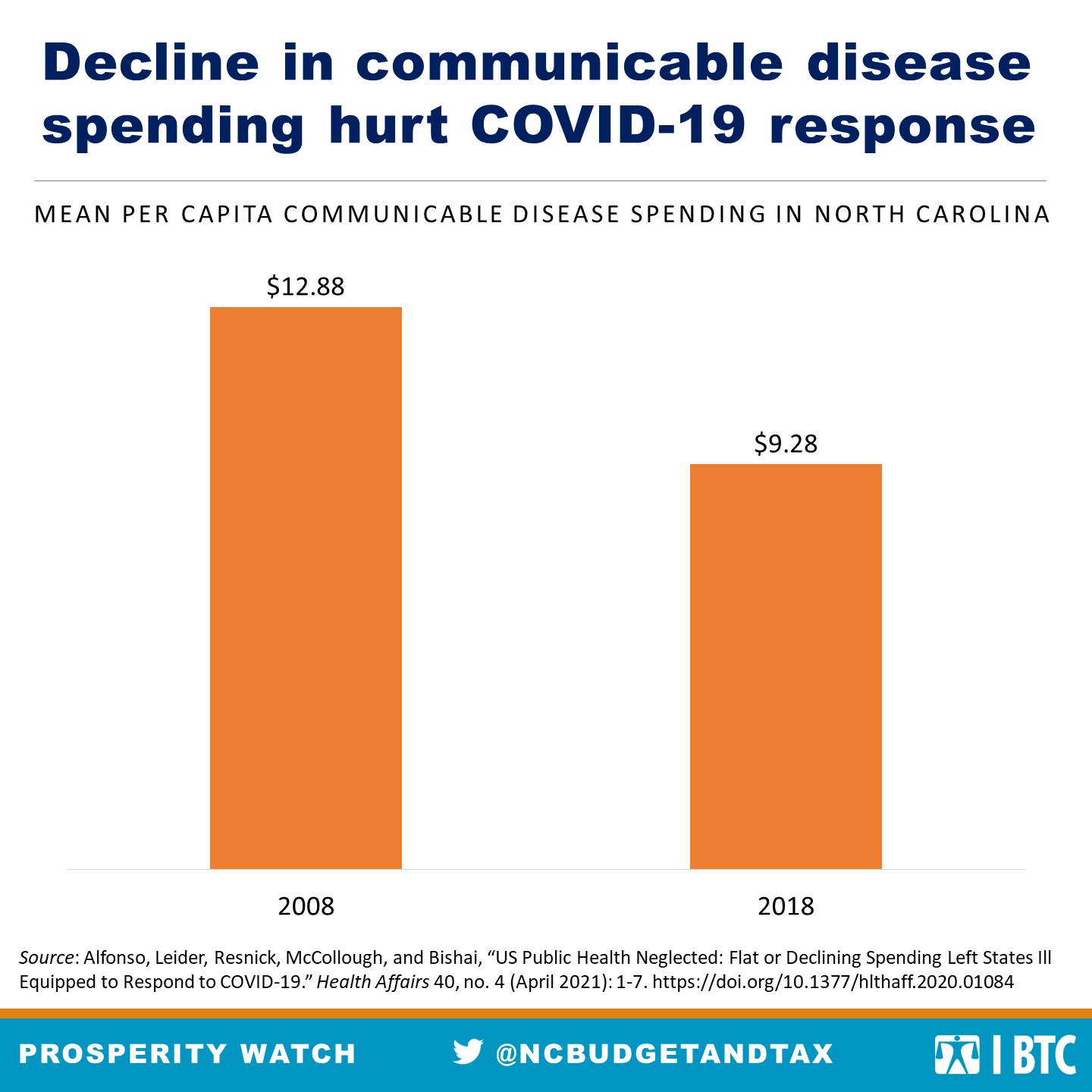A recent publication in the health policy journal Health Affairs sheds light on state-level under-investments in public health, which have likely hampered North Carolina’s response to the COVID-19 pandemic.
Data for North Carolina reveal that from 2008 to 2018, the state experienced a decline in spending for communicable disease control, in contrast to the 49 states* the study includes in its analysis , which saw a small increase in spending for communicable disease control. As the authors note, there were major public health and communicable disease events during this time — including the Ebola virus, Zika virus, West Nile virus, MERS, and measles outbreaks — suggesting that the modest spending increase in some states was still inadequate to meet the scale of need.
In contrast, there was a modest increase in average per capita spending toward functional capabilities, which includes policy development, assessment, community partnership, and communications. Overall public health spending at the state level grew during the study period, though the increase is not statistically significant.
One-time funding has been critical for bolstering the public health response necessary to combat the COVID-19 pandemic, but experts say that strengthening the public health infrastructure and making sustained investments in the long-term are necessary to protect our nation’s health.
* California data was not available.
 Justice Circle
Justice Circle 